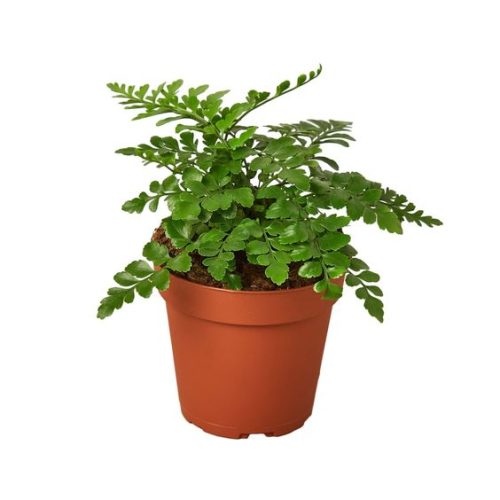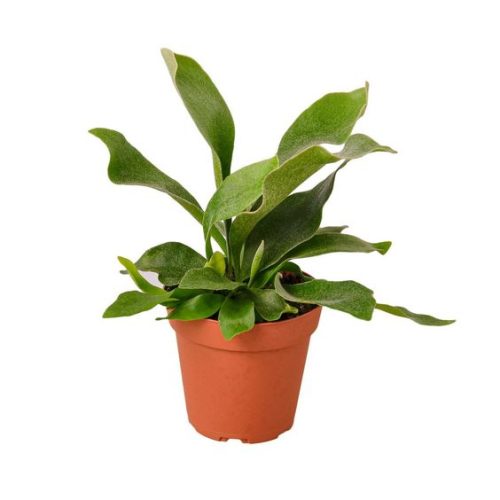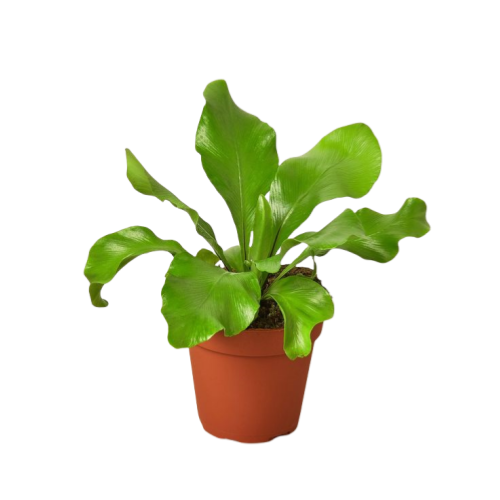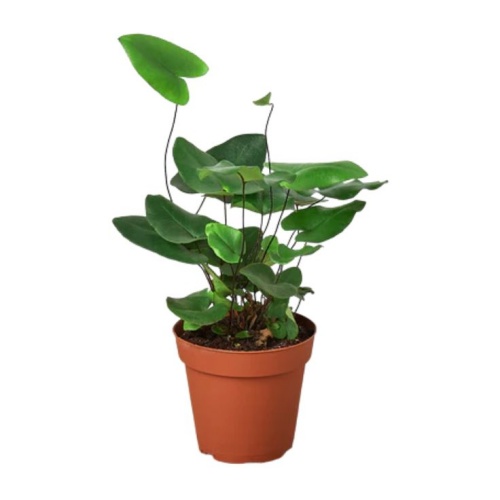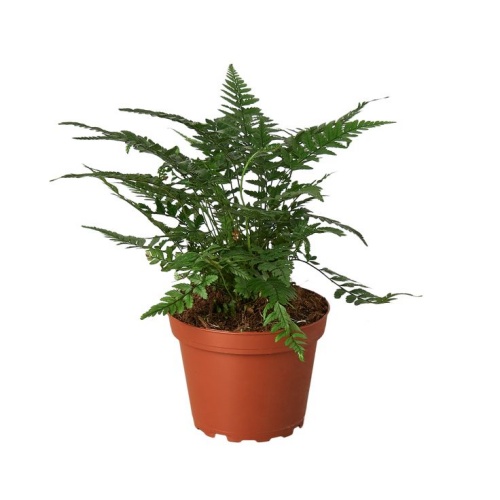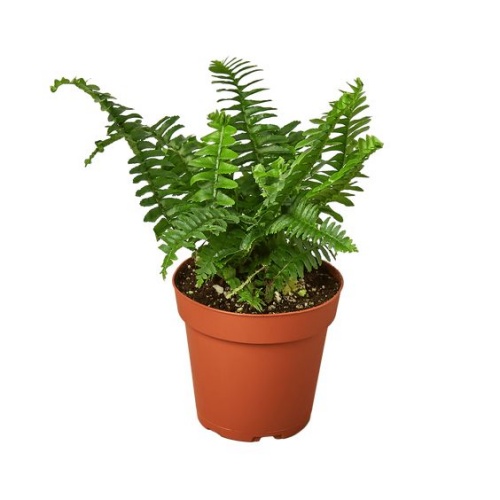Blue Star Fern
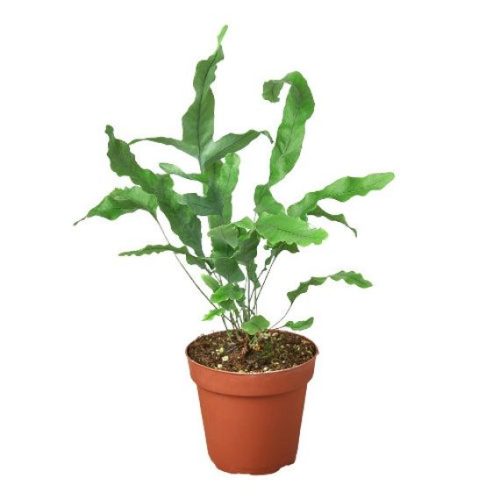
- Botanical Name: Phlebodium Aunium
- Family Name: Polypodiaceae
- Zimayambira: 1-3 Inches
- Kutentha: 5℃-28℃
- Other: Shade tolerant, warmth, not cold resistant, prefers humidity
Kulemeletsa
Mafotokozedwe Akatundu
Royal Fern Dominion: The Blue Star’s Sublime Habitat
Blue Star Fern mwachidule
A Blue Star Fern, kutchulidwa kwasayansi monga gawo la banja la Pulypodiae ndipo anali a Gelebodium, amadziwika ndi tsamba lake la masamba. Maluwa ake ocheperako amakhala ndi sera yabwino ya Blue, ndikuwapatsa mawonekedwe a imvi. Kubadwa ndi nkhalango zam'mmanda ku South America, izi zimangoyenda bwino m'malo achinyontho ndipo sikuti kulolerana. Imatha kusintha malo owala koma imakula bwino kwambiri.
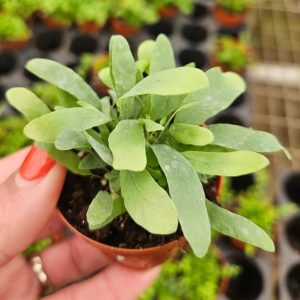
Blue Star Fern
Mikhalidwe yopepuka
The Blue Star Fern prefers to be placed near east or south-facing windows, where it can enjoy the soft morning sunlight followed by bright, diffused light for the remainder of the day. Direct strong light, such as midday sun during summer, can scorch the fronds, leading to curling, scorching, and yellowing. Conversely, insufficient light can result in slow growth, legginess, and reduced new leaf size and vibrancy. As seasonal light conditions change, it’s important to adjust the plant’s location to avoid harsh direct sunlight in summer while ensuring it receives ample light during winter months. Regularly rotating the plant ensures even growth as it basks in the light.
Zokonda
Ferni uyu amasangalala ndi nyengo zotentha ndipo sazizira chisanu. Imakula bwino madera 15-28 a Celsius. Ngati kutentha kumatsika kwambiri, mbewuyo imatha kulowa boma, lomwe lingayambitse tsamba dontho. Kuti asunge chidwi chake chokwanira komanso chowoneka, tikulimbikitsidwa kusunga nyenyezi ya buluu fern m'nyumba nthawi yachisanu. Kutentha sikuyenera kugwera pansi madigiri 5 Celsius, monga kukhudzana ndi kuzizira kumatha kuwononga chomera chamtsogolo chino. Kusamalira m'nyumba nthawi yachisanu ndikofunikira, ndipo mbewuyo iyenera kusungidwa kutali ndi zowongolera mpweya kapena zowongolera kuti mupewe kusinthasintha kwa kutentha.
Chinyezi ndi kuthirira
Originating from the damp rainforests of South America, the Blue Star Fern favors moist conditions and is prone to drying out. During spring and summer, the soil should be kept lightly moist, while in autumn and winter, it is sufficient to water once the topsoil is completely dry. It’s crucial to use well-draining, breathable pots and soil to prevent waterlogging, which can lead to root rot. When watering, always check the soil’s moisture level with your finger or a tool before hydrating; never water on a whim. Ensure that the pot you use has good drainage and breathability, as some pots or saucers may not have drainage holes. In the heat of summer, regular misting of the leaves can be beneficial. The plant should be situated in a well-ventilated environment, as ventilation significantly affects the evaporation rate of soil moisture.
Chinyezi
Amakonda zachilengedwe zambiri zimakhala ndi chinyezi kwambiri, koma nyenyezi ya buluu siikhala yovuta. Mitundu yanyumba yanyumba komanso yaubele imakhala yokwanira kukula kwake. Ngati chinyezi chozungulira chimakhala chochepera 40%, makamaka m'miyezi yozizira, madziwo nthawi zambiri kapena amathira masamba kuti abweze matendawa.
Malangizo Olimbika Chinyontho
– Utilize a humidifier, taking care to mist around rather than directly on the leaves, lightly spraying the plant’s surroundings or above it.
– Group plants that prefer high humidity together to create a micro-humid zone.
– Create a DIY humidifier by placing a shallow tray with pebbles or another medium, filling it with water so that it covers half the medium, and placing the pot on top, ensuring the pot is not submerged in water. The natural evaporation will help maintain humidity.
Kuyamika
The Blue Star Fern does not have a high demand for fertilizer. Moderate fertilization is sufficient. During the spring and summer growing seasons, apply a balanced, water-soluble fertilizer at half strength once a month. Fertilizing can be halted in winter when the plant’s growth slows down due to low temperatures, as fertilizing then could burn the roots.
Malangizo a Umuna
– If the plant is in the right environment and shows significant leaf growth, supplemental fertilizer can be beneficial.
– If you’ve used fresh soil with added base fertilizer, no additional fertilization is needed.
– Remember, more is not always better; over-fertilizing can harm the root system due to fertilizer buildup.
Kutsegulira mphepo
Mpweya wabwino wowuma munyumba yobzala chomera nthawi zambiri kumabweretsa tizirombo monga nthanga za kangaude ndi tizilombo tambiri. Mpweya wabwino umagwira ntchito chinyezi. Kuyesera kunawonetsa kuti masamba ophika ophika amatenga sabata limodzi kuti lithetse khonde lotsekeka kwathunthu, koma masiku awiri okha mpaka atatu munthawi yopumira yowuma nthawi yowuma panthaka kuchokera panthaka.
Malangizo Othandizira
– Without proper ventilation, moisture evaporates slowly, leading to overly wet soil for extended periods, which can cause pests and diseases, and even root rot.
– A small fan can aid in plant ventilation; be mindful not to place it in a direct draft from windows during winter.
– If you cannot guarantee sufficient ventilation, consider reducing watering and placing the plant in a brighter environment. Adjusting the potting mix and choosing more breathable pots can also help.





